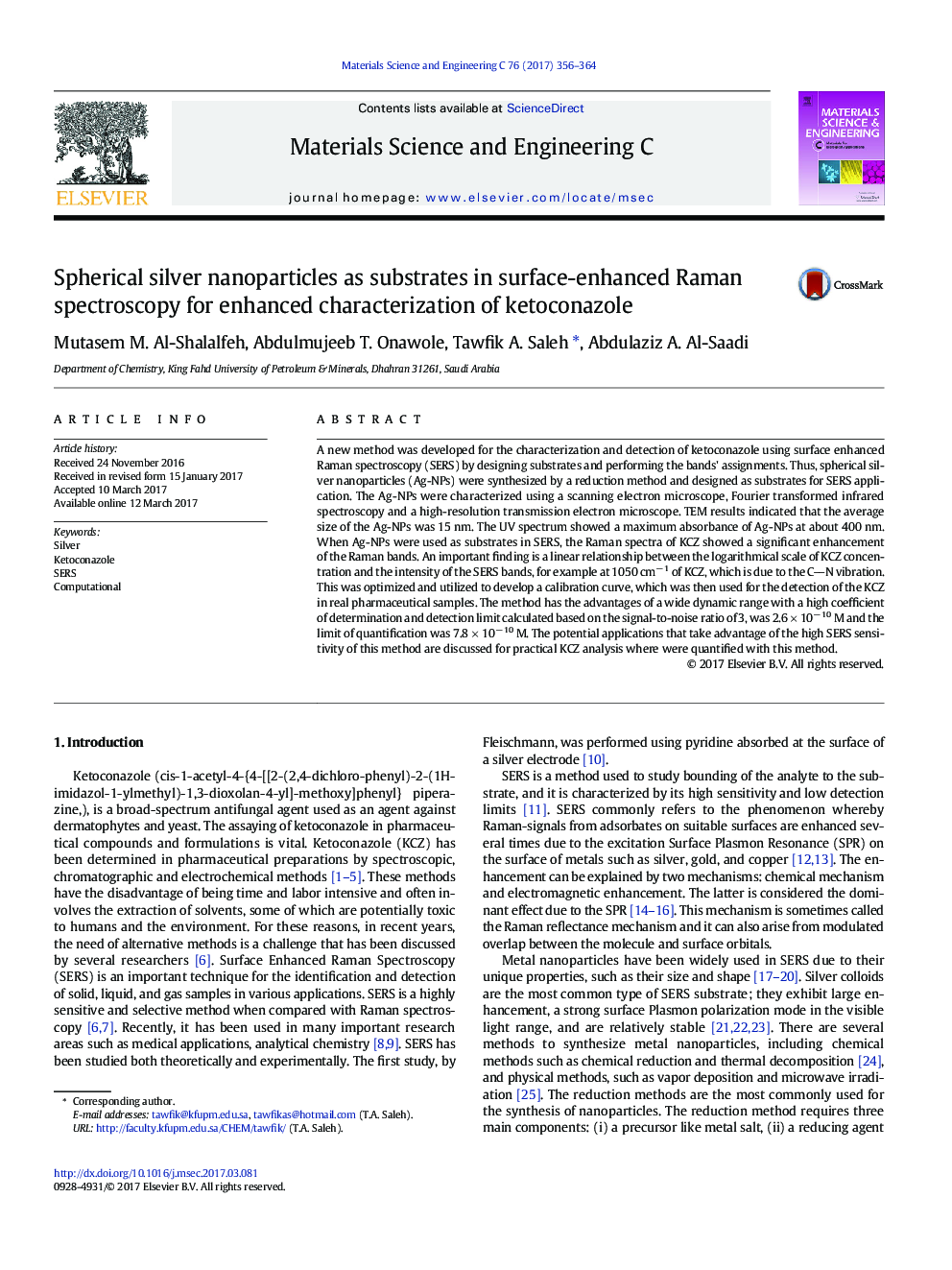| Article ID | Journal | Published Year | Pages | File Type |
|---|---|---|---|---|
| 5435127 | Materials Science and Engineering: C | 2017 | 9 Pages |
â¢Chemical reactions were used for the synthesis of Ag nanosubstrates.â¢The SERS and Raman spectra were studied for the KCZ.â¢The correlation between the concentrations of KCZ and the SERS signal intensity was investigated.
A new method was developed for the characterization and detection of ketoconazole using surface enhanced Raman spectroscopy (SERS) by designing substrates and performing the bands' assignments. Thus, spherical silver nanoparticles (Ag-NPs) were synthesized by a reduction method and designed as substrates for SERS application. The Ag-NPs were characterized using a scanning electron microscope, Fourier transformed infrared spectroscopy and a high-resolution transmission electron microscope. TEM results indicated that the average size of the Ag-NPs was 15 nm. The UV spectrum showed a maximum absorbance of Ag-NPs at about 400 nm. When Ag-NPs were used as substrates in SERS, the Raman spectra of KCZ showed a significant enhancement of the Raman bands. An important finding is a linear relationship between the logarithmical scale of KCZ concentration and the intensity of the SERS bands, for example at 1050 cmâ 1 of KCZ, which is due to the CN vibration. This was optimized and utilized to develop a calibration curve, which was then used for the detection of the KCZ in real pharmaceutical samples. The method has the advantages of a wide dynamic range with a high coefficient of determination and detection limit calculated based on the signal-to-noise ratio of 3, was 2.6 Ã 10â 10 M and the limit of quantification was 7.8 Ã 10â 10 M. The potential applications that take advantage of the high SERS sensitivity of this method are discussed for practical KCZ analysis where were quantified with this method.
Graphical abstractDownload high-res image (223KB)Download full-size image
